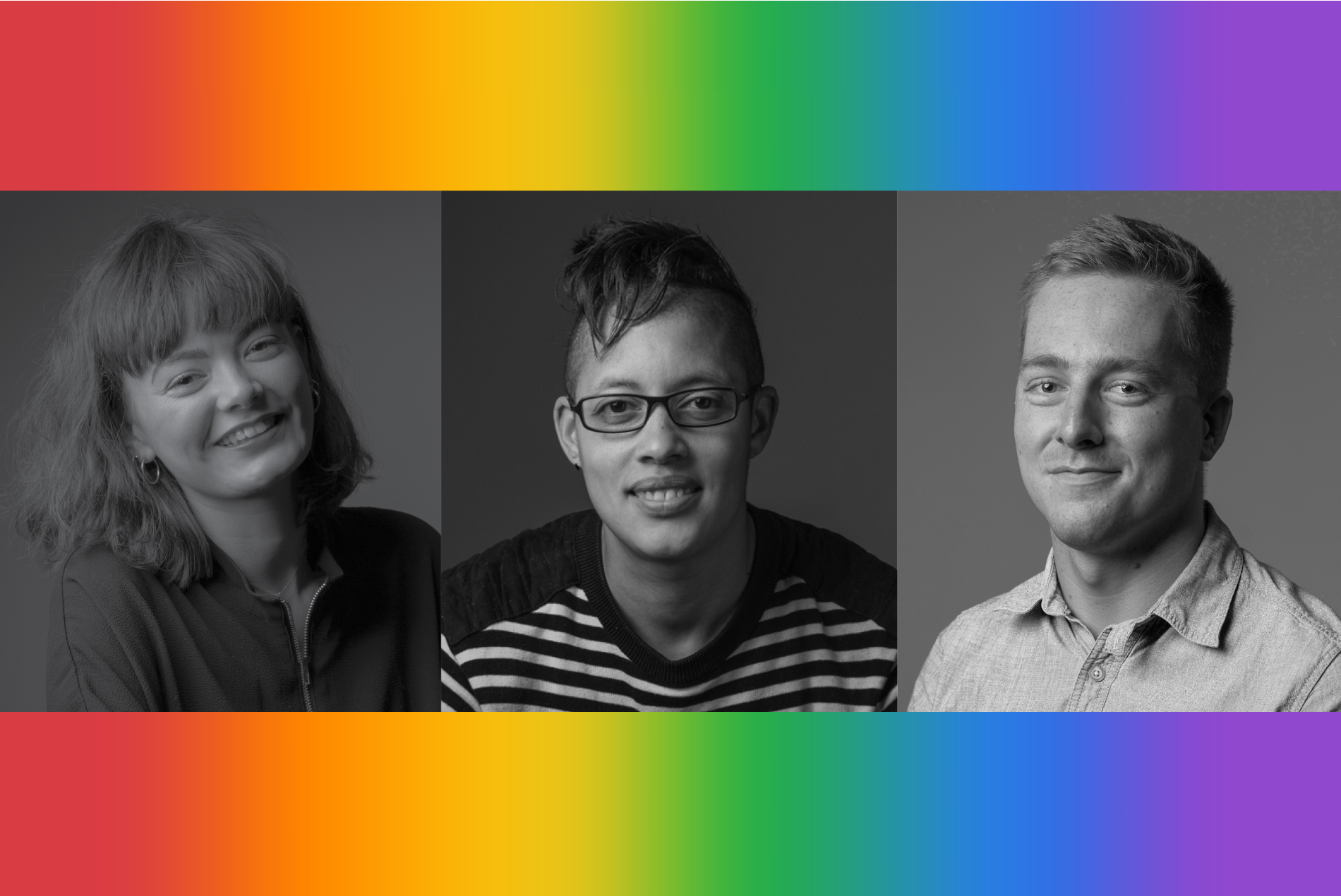HOK’s Emily Costain, Michelle Trafford and Jack Nolan (left to right above) discuss the mission and hope for the firm’s new LGBTQ+ platform.
National Inclusion Week is going on now in the UK. The weeklong celebration of diversity in the workplace seems like a perfect time to catch up with the founders of Friendly Society, an HOK employee platform launched earlier this year to support and champion the LGBTQ+ community.
What compelled you to organize and lead the Friendly Society?
The Friendly Society evolved from the work of the LGBTQ+ Committee in the London studio. We are committed to equality and inclusion, and we set out to achieve this for everyone within HOK. Our goals are to show HOK’s support of the LGBTQ+ community, develop our colleague’s knowledge and understanding of the community, give allies the opportunity to become active, ensure our use of language is inclusive and ensure our policies are up to date and attractive to new colleagues.
After becoming sponsors of Architecture LGBT in London, we learned just how difficult it can be for LGBTQ+ people to be their true selves in the workplace. With that knowledge, we wanted to create a safe place for our own LGBTQ+ community. This became Friendly Society, HOK’s LGBTQ+ network.
What’s the single biggest thing you hope the Friendly Society will accomplish?
It’s all in the name. It’s about HOK being visible and supportive to everyone and championing the needs of LGBTQ+ people. We hope the Friendly Society will build a reputation for being a safe space for the community as well as a place for allies to learn, support and act. It provides a platform for the LGBTQ+ community to network and discuss ideas and initiatives with other HOK studios. For allies, the channel (hosted internally via Microsoft Teams) can be a resource for LGBTQ+ education.
How can colleagues support the Friendly Society besides just joining the Teams channel?
Progress only happens when everyone comes together with a shared purpose. This means each person taking responsibility for making change by learning about LGBTQ+ people and their lived experiences. It means understanding the difference between sexual identity, gender identity and understanding the complexities of gender identity. It means learning about LGBTQ+ history and understanding the issues some people may still face. And it’s about stepping up to challenge discrimination. Colleagues can come to events, read our guidance documents, start conversations and learn together in a supportive environment.
What have you seen the new network accomplish so far?
We have seen many people from the LGBTQ+ community as well as allies join the channel. We have started a discussion on allowing people to use their preferred pronouns at HOK. We have hosted virtual events and speakers. We have shared information on LGBTQ+ history and terminology, and we’ve sparked meaningful discussions.
How do you see the field of architecture changing with societies like this one?
The industry must be committed and champion equality outwardly and mean it. This is not a tick-box exercise, and it requires people to take this seriously. It is the responsibility of everyone to defend the rights of all LGBTQ+ people globally. Networks in or outside of the architectural industry need to invest the time to listen to their LGBTQ+ communities to really understand what issues remain and understand what needs to be done.
